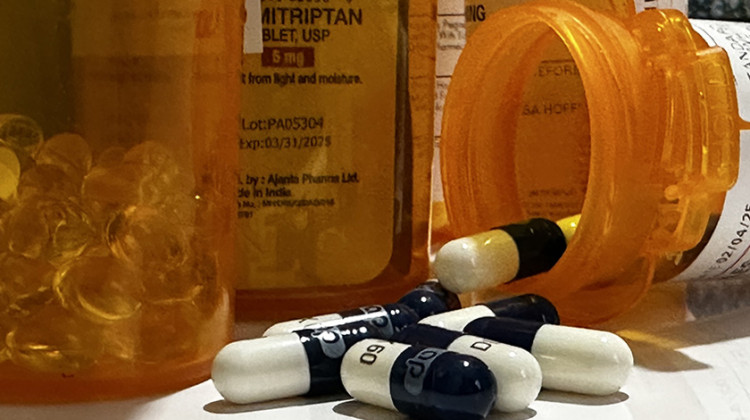
Mr. and Mrs. Santa Claus pose for an image while at a mall in December 2020. Dr. Scott Stienecker said he expects the holidays to become a “pretty active COVID season,” based on how these variants have behaved in other countries.
Justin HicksTwo new subvariants of the COVID-19 omicron strain are gathering steam nationally. Epidemiologists say cases of these subvariants are likely to peak during the holidays.
What are the subvariants?
The subvariants – BQ.1 and BQ.1.1 – are mutations of the omicron variant. They were first added to the Centers for Disease Control and Prevention’s variant dashboard in mid-October.
The CDC said the subvariants are grandchildren of the BA.5 variant that has been dominant in the U.S. for several months. BQ.1 and BQ.1.1 accounted for about 2 percent of all sequenced U.S. COVID-19 cases the last week of September.
Dr. Scott Stienecker is an epidemiologist and spokesperson for the Society for Healthcare Epidemiology of America.
“It’s been gathering steam across the country and it now accounts for 35 percent of all the isolates that are sequenced,” Stienecker said.
Why is there any concern about these strains?
BQ.1 and BQ.1.1 elude monoclonal antibody treatments and the original vaccine schedules.
“Those people who have had previous infections or previous vaccinations, really only have about a 20-35 percent protective effect. Whereas the current bivalent boosters give you up to a 94 percent protective effect,” Stienecker said.
Those bivalent boosters are available to people at least two months after completing primary or booster vaccination. Pfizer’s bivalent booster dose is available for people 5 and older and Moderna is available for people 6 and older.
Are these new strains worse than the original omicron variant?
The good news: Stienecker said these variants don’t appear to cause more severe illness than the previous highly infectious omicron strains.
He said Hoosiers who have any underlying health conditions should seek out that treatment as early as possible. That could include Paxlovid, an antiviral medication that can be taken within five days of developing symptoms to prevent hospitalization or death.
“…our expectation is that we’re still going to be able to treat people, as long as we can catch them early,” Stienecker said.
Stienecker said the problem for many folks is by the time they realize “they’re in trouble, it’s usually a week–two weeks down the road.”
He said the other concerning aspect of these emerging strains is long COVID – or symptoms that linger for weeks or even months after initial infection triggered by an autoimmune response.
“But those people who have mild or even moderate disease may actually end up with a higher chance of long COVID than those people with severe disease,” he said.
READ MORE: Epidemiologist says Hoosiers should get bivalent vaccines before winter
Join the conversation and sign up for the Indiana Two-Way. Text "Indiana" to 73224. Your comments and questions in response to our weekly text help us find the answers you need on COVID-19 and other statewide issues.
When are these variants expected to peak?
Stienecker said he expects the holidays to become a “pretty active COVID season,” based on how these variants have behaved in other countries.
“I think that large holiday gatherings are going to be at high risk for transmission of COVID, and that could ruin everybody’s holiday. So I recommend we don’t do that,” he said.
Stienecker emphasized that things like masking and regular hand washing is an effective way to help prevent spread. Indiana – like the rest of the U.S. – is getting hit by an early flu season and rampant RSV spread. Those preventative measures (along with getting a flu shot) will also help prevent the spread of those respiratory diseases.
And he said Hoosiers should get their bivalent booster as soon as possible.
Contact Lauren at lchapman@wfyi.org or follow her on Twitter at @laurenechapman_.
9(MDAyMzk1MzA4MDE2MjY3OTY1MjM5ZDJjYQ000))
 DONATE
DONATE








 Support WFYI. We can't do it without you.
Support WFYI. We can't do it without you.